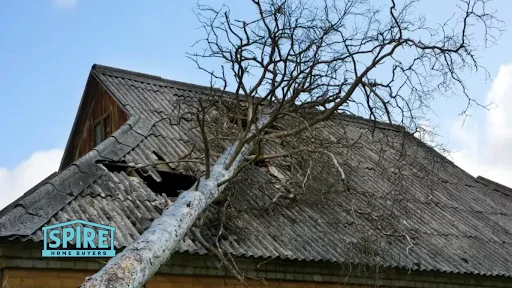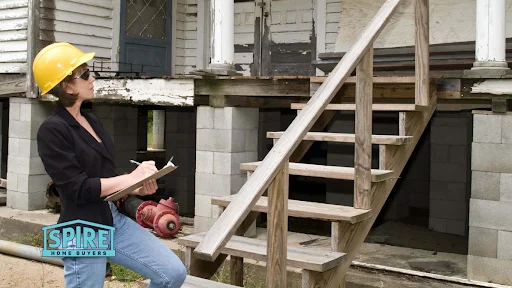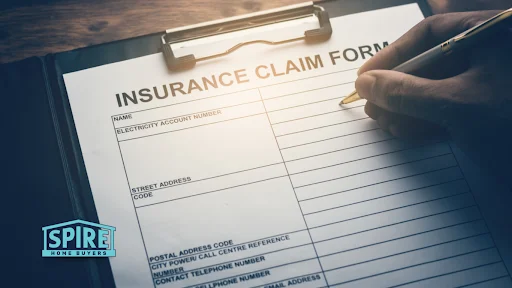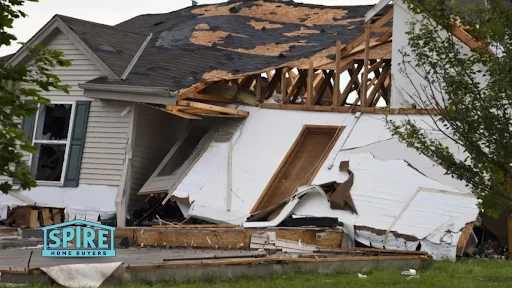How to Sell a Storm-Damaged House in Perry, GA

Selling a storm-damaged house can seem like a daunting task, especially if the damage is severe. Storms often leave behind issues like flood damage, broken windows, or a compromised roof, which can make selling your home feel overwhelming. However, with the right approach, you can sell your house quickly and at a fair price—even if it's been damaged by a storm.
If you're thinking, How do I sell my storm-damaged house in Perry, Georgia? this comprehensive guide is here to help. Below, we’ll outline every step you need to take to simplify the process, address challenges, and explore the benefits of selling your home to a cash buyer.

Understanding Storm Damage and Its Impact on Selling a House
When a storm hits, it can cause visible and invisible damage to a home. The aftermath can include anything from strong winds tearing off shingles to water damage affecting the walls and foundation. This type of destruction can drastically reduce your home’s market value and make it harder to find buyers through traditional methods.
In Perry, Georgia, where severe storms can strike, homeowners may face specific challenges when trying to sell their homes. Whether you're dealing with a roof that needs replacing or structural damage, taking the right steps can help you navigate the sale process.

Step 1: Assess the Damage
Before doing anything else, you need to assess the damage to understand the condition of your home. This process involves inspecting every aspect of your property, including:
Roof: Look for missing or damaged shingles, leaks, or structural issues caused by strong winds or falling debris.
Windows and Doors: Check for broken glass, cracked frames, or signs of water intrusion.
Interior: Identify water damage or mold, especially in walls, ceilings, and floors.
Foundation and Exterior: Inspect for cracks, uneven areas, or flooding-related problems.
Having a clear picture of the damage will guide your next steps, whether you’re filing an insurance claim, calculating repair costs, or preparing to sell as-is.

Step 2: Document the Damage
Once you’ve assessed the damage, the next step is to document the damage thoroughly. This is an essential part of the selling process, as it helps with both insurance claims and creating transparency for potential buyers.
Tips for Effective Documentation:
Take Clear Photos: Capture images of every damaged area, including close-ups and wide shots.
Record Videos: A video walkthrough can provide prospective buyers with a complete view of the home’s condition.
Keep Records: If you’ve already spent money on temporary repairs, keep receipts and invoices to demonstrate your investment.
By documenting the condition of your storm-damaged house, you’ll have valuable evidence for negotiating with buyers or filing insurance claims.

Step 3: File an Insurance Claim
If you have homeowner’s insurance, it’s essential to act quickly. Contact your insurance company and start the claims process as soon as possible.
What to Expect During the Claim Process:
Inspection: An adjuster will inspect your home to determine the extent of the damage.
Coverage Details: Review your policy to understand what repair costs will be covered and whether there are exclusions.
Payout Timeline: Insurance claims can take time, so it’s crucial to stay patient and follow up regularly.
If your insurance covers repairs for your storm-damaged property, this can significantly reduce your out-of-pocket expenses. However, if the payout is insufficient, selling the property as-is might be a better option.

Step 4: Calculate Repair Costs
Once you’ve filed your insurance claim, calculate the total cost of repairs. Speak to contractors to get quotes for addressing major issues like:
Roof Repairs: Replacing missing shingles or fixing structural damage.
Water Damage Restoration: Addressing mold, leaks, and damaged drywall.
Structural Repairs: Fixing cracks, broken windows, or unstable foundations.
After reviewing the costs, you can decide whether it’s worth repairing your home before selling or if it makes more sense to sell it as-is.
The Downsides of Repairing a Storm-Damaged Home:
High Costs: Repairing significant damage can cost tens of thousands of dollars.
Delays: Repairs can take weeks or months, delaying your ability to sell the home.
Uncertain ROI: There’s no guarantee you’ll recoup the repair costs when you sell.
For many homeowners, selling as-is to a cash buyer is the most practical solution.

Step 5: Decide How to Sell Your Storm-Damaged House
When selling a house with storm damage, you have two primary options:
1. Work with Real Estate Agents
Listing your home with a real estate agent is a common choice, but it has its challenges. Most prospective buyers prefer move-in-ready homes, which can make selling a storm-damaged property more difficult.
Agents may recommend extensive repairs or staging to make the house more appealing, both of which increase your costs. Additionally, the selling process through agents can take months, which isn’t ideal if you’re looking for a quick sale.
2. Sell Your Storm-Damaged House As-Is
Selling as-is to a cash buyer offers a faster, hassle-free alternative. Cash buyers specialize in purchasing homes in any condition, including those with extensive storm damage.
Benefits of Selling to a Cash Buyer
If you’ve been searching for a way to sell my storm-damaged house without the hassle, here are the top reasons to consider a cash buyer:
No Repairs Needed: Save time and money by skipping the repairs entirely.
Quick Closings: Cash buyers can close in as little as seven days, helping you move on faster.
No Fees or Commissions: You won’t have to pay agent fees, saving you thousands of dollars.
Stress-Free Process: Selling a storm-damaged home as-is eliminates the stress of buyer inspections and negotiations.
How to Prepare Your Storm-Damaged House for Sale
If you decide to sell your storm-damaged property, here are a few tips to make the process smoother:
1. Be Transparent About the Damage
Honesty is essential when marketing your home. Disclose all issues upfront and provide documentation to give buyers a clear understanding of the property’s condition.
2. Highlight Any Repairs or Upgrades
If you’ve made temporary repairs or improvements, let buyers know. Even minor fixes can make your home more appealing.
3. Set a Realistic Price
The price of your storm-damaged home should reflect its condition. A fair, competitive price can attract buyers and speed up the sale.

Selling a Storm-Damaged House in Perry, Georgia
If you’re ready to move on from your storm-damaged home, selling it as-is is often the best option. At Spire Home Buyers, we specialize in purchasing storm-damaged properties in Perry, Georgia, and surrounding areas.
Why Choose Spire Home Buyers?
At Spire Home Buyers, we make it easy to sell a storm-damaged house without the stress. Here’s why homeowners choose us:
Fair Cash Offers: We provide competitive offers based on your home’s current condition.
Fast Closings: You can close in as little as seven days.
No Hidden Fees: We handle all the paperwork and don’t charge commissions.
We Buy As-Is: No repairs or cleaning are required.
Conclusion
Selling a storm-damaged house in Perry, Georgia, doesn’t have to be overwhelming. By assessing the damage, documenting it, and choosing the right selling strategy, you can move forward with confidence. Whether you work with a real estate agent or sell as-is, knowing your options ensures you make the best decision for your situation.
Contact us today at 470-570-7021 to receive a no-obligation cash offer and start your journey toward a stress-free sale!